Detailed Introduction to KONGSBERG RCU602 Marine Remote Control Unit
1. Product Description
The KONGSBERG RCU602 is a high-reliability, marine-grade remote control unit (RCU) belonging to KONGSBERG Maritime’s RCU (Remote Control Unit) Series—a specialized product line engineered for centralized remote operation, monitoring, and safety interlocking of critical marine systems, including propulsion auxiliaries, deck machinery (winches, cranes), and cargo handling equipment. Designed as the “remote command interface” between the vessel’s control room/bridge and on-deck/offshore equipment, this unit eliminates the need for on-site operators in hazardous or hard-to-reach areas, enhancing personnel safety while optimizing operational efficiency.
What distinguishes the RCU602 from conventional marine remote controls is its multi-system compatibility and KONGSBERG’s proprietary “Secure Remote Command Protocol” (SRCP). Unlike basic remote switches that only transmit simple on/off signals, the RCU602 enables bidirectional data exchange—sending precise control commands (e.g., winch speed adjustment, crane boom positioning) while receiving real-time equipment status (load, temperature, fault codes) for closed-loop control. Its intelligent safety logic also enforces pre-defined interlocks (e.g., preventing crane operation if wind speed exceeds 25 m/s) to mitigate operational risks, a critical feature for offshore and heavy-lift applications.
Built to withstand extreme maritime conditions, the RCU602 features an IP66-rated corrosion-resistant aluminum alloy enclosure, capable of enduring saltwater spray, high humidity (5%-95% RH, non-condensing), and temperature fluctuations (-30°C to +75°C). It offers seamless integration with KONGSBERG’s K-Chief 700/800 Integrated Automation System (IAS) and third-party vessel control platforms (e.g., Wärtsilä IAS, Rolls-Royce IPCS) via maritime-certified protocols (CANopen DS 301, Modbus TCP/IP, and KONGSBERG K-Bus). Certified by leading marine authorities (ABS, LR, DNV GL) and compliant with IMO SOLAS, IEC 61162, and ISO 13849 safety standards, the RCU602 is trusted in applications ranging from offshore supply vessels and drillships to merchant ships and naval craft—where remote, safe, and precise equipment control is paramount.
2. Product Technical Specifications
|
Specification Category
|
Details
|
|
Core Control Capabilities
|
– Primary Functions: Remote equipment operation (speed/torque/position control), real-time status monitoring, safety interlock enforcement, fault detection & alarm generation- Protection Features: Overload protection (programmable setpoints), emergency stop (E-stop) signal prioritization, communication loss fail-safe mode (equipment shutdown/hold), short-circuit protection for I/O channels- Control Modes: Auto (integrated with vessel IAS), Manual (local remote control), Semi-Auto (operator-initiated commands with system supervision)
|
|
Electrical Parameters
|
– Power Supply: 24 VDC (dual redundant inputs, 18-32 VDC range) compliant with marine electrical standards (IEC 60092-507)- Power Consumption: Typical 12 W; Max 20 W (during high I/O activity or wireless transmission)- Fuse Rating: 2 A slow-blow per power input channel; 1 A fast-blow for I/O circuits
|
|
Input/Output (I/O) Interfaces
|
– Digital Inputs: 32 channels (24 VDC, sinking/sourcing configurable) for limit switches, E-stop signals, equipment status sensors (e.g., “crane boom in position”)- Digital Outputs: 16 channels (24 VDC, 3 A max per channel) for relay control, valve actuation, alarm indicators (visual/audio)- Analog Inputs: 8 channels (16-bit resolution, 4-20 mA/0-10 VDC) for load cells, pressure/temperature sensors, position transducers- Analog Outputs: 4 channels (16-bit resolution, 4-20 mA/0-10 VDC) for variable speed control (e.g., winch motor VFDs)- Communication: Wired (CANopen DS 301, Ethernet Modbus TCP/IP, RS-485 Modbus RTU, K-Bus); Wireless (2.4 GHz RF, 100 m line-of-sight range, AES-128 encryption)
|
|
Performance Metrics
|
– Command Latency: <100 ms (wired mode); <200 ms (wireless mode, line-of-sight)- Control Precision: ±0.5% full scale for analog outputs (e.g., winch speed adjustment)- Status Update Rate: 10 Hz (real-time data transmission to IAS)- Load Monitoring Range: 0-1000 kN (compatible with 4-20 mA load cells)
|
|
Physical & Environmental
|
– Dimensions: 220 mm (W) × 160 mm (H) × 85 mm (D) (panel-mountable)- Weight: 1.9 kg- Operating Temperature: -30°C to +75°C- Storage Temperature: -40°C to +85°C- Protection Rating: IP66 (enclosure); IP65 (connectors, per IEC 60529)- Vibration Resistance: IEC 60068-2-6 (10-500 Hz, 15 g peak acceleration)- Shock Resistance: IEC 60068-2-27 (50 g, 11 ms half-sine pulse)
|
|
Reliability & Compliance
|
– Certifications: ABS, LR, DNV GL marine type approval; CE (EMC/EMI compliance, EN 61000-6-2/6-4); IMO SOLAS; ISO 13849-1 (PLd safety level)- Mean Time Between Failures (MTBF): >150,000 hours (per IEC 61709)- Fault Logging: 500-event memory with timestamp (E-stop triggers, overload events, communication errors)
|
3. Usage Instructions
3.1 Installation & Setup
- Pre-Installation Checks
-
- Verify compatibility with target equipment (e.g., confirm winch motor VFD signal type matches RCU602’s analog output range); cross-check part number RCU602 with the vessel’s technical data sheet and equipment BOM.
-
- Inspect the unit for shipping damage (cracked enclosure, bent connector pins, damaged cables) and ensure marine certification marks (ABS/DNV GL) and serial number labels are intact.
-
- Prepare tools: Torque screwdriver (0.8-2.0 N·m), ESD wristband, marine-grade shielded cables (16 AWG for power, 22 AWG for analog/digital signals), and KONGSBERG-approved wiring harness (part no. RCU-HAR-006).
- Mechanical Mounting
-
- Location: Install in the vessel’s control room panel, deck machinery local control cabinet, or offshore platform control station. Maintain 50 mm clearance on all sides for ventilation; avoid mounting near heat sources (e.g., engine exhaust, power inverters) or direct saltwater spray.
-
- Securing: Fasten the unit to the panel using four M5 × 12 mm stainless steel screws torqued to 1.5 N·m. Use the provided nitrile gasket between the enclosure and panel to enhance IP66 dust/water protection.
- Wiring Connections
-
- Power Wiring: Connect dual 24 VDC power supplies (positive to terminals PWR1+/PWR2+, ground to PWR1-/PWR2-) with 2 A inline fuses per supply. Use color-coded marine cables (red for positive, black for ground) per SOLAS wiring regulations (IEC 60092-303).
-
- I/O Wiring:
-
-
- Digital Inputs (DI): Wire limit switches (e.g., “crane boom upper limit”) and E-stop buttons to DI1-DI32. Configure sinking/sourcing mode via DIP switches on the unit’s rear panel (switch 1-8 for DI groups).
-
-
-
- Digital Outputs (DO): Connect DO1-DO16 to relay coils or alarm lights. For loads exceeding 3 A, use external contactors (e.g., KONGSBERG K-REL-002) to avoid channel damage.
-
-
-
- Analog Inputs (AI): Wire load cells (4-20 mA) and temperature sensors (0-10 VDC) to AI1-AI8. Use twisted-pair shielded cable and ground the shield at the sensor end to reduce electromagnetic interference (EMI).
-
-
-
- Analog Outputs (AO): Connect AO1-AO4 to variable speed drives (VFDs) or position actuators (e.g., winch speed control). Verify signal polarity to ensure correct equipment operation.
-
-
- Communication Wiring:
-
-
- Wired: Connect CANopen terminals (CAN_H/CAN_L) to the vessel’s IAS bus; terminate with a 120 Ω resistor at the last device in the chain. For Ethernet, use Cat5e shielded cable to the control room network switch (IP default: 192.168.4.20).
-
-
-
- Wireless: Mount the 2.4 GHz RF antenna (included) to a metal-free surface at least 1 m above deck; connect the antenna cable to the “RF ANT” port on the unit’s rear.
-
- Post-Installation Verification
-
- Power on both redundant supplies; check the “PWR1” and “PWR2” LEDs (solid green = normal operation).
-
- Test I/O channels: Activate a limit switch and confirm the corresponding DI LED illuminates; send a test DO command via configuration software and verify relay activation.
-
- Validate communication: Use a laptop to ping the RCU602’s Ethernet IP and confirm data transmission to the K-Chief IAS. For wireless mode, pair the unit with a KONGSBERG remote pendant (part no. RCU-PND-003) and test command latency (<200 ms).
3.2 Configuration & Operation
- Initial Configuration via KONGSBERG Remote Control Configurator (KRCC)
-
- Software Setup: Install KRCC (v5.2+ for Windows) and connect to the RCU602 via USB service port or Ethernet. Launch the “Device Wizard” to auto-detect connected equipment (e.g., winch, crane).
-
- Parameter Configuration:
-
-
- Equipment Profile: Select the target device type (e.g., “offshore crane”) and load pre-defined parameters (e.g., max lift load = 500 kN, boom speed range = 0-10 m/min).
-
-
-
- Safety Limits: Set overload thresholds (e.g., 110% of max load = alarm, 120% = E-stop), wind speed cutoffs (e.g., >25 m/s = crane lockout), and E-stop response time (<100 ms).
-
-
- Interlock Programming: Define safety rules via function block diagrams (FBD) in KRCC—e.g., “Allow winch operation only if E-stop is not triggered (DI1 = OFF) and load < 500 kN (AI1 < 16 mA)”.
- Normal Operation
-
- Auto Mode (IAS Integration): Activate “Auto” via the K-Chief HMI. The RCU602 receives commands from the control room (e.g., “crane lift 200 kN cargo”) and executes them while monitoring equipment status. Real-time data (load, boom position, fault codes) is relayed to the IAS for centralized monitoring.
-
- Manual Mode (Remote Pendant): For on-deck operations, use the RCU-PND-003 wireless pendant to send direct commands (e.g., “winch up/down”, “crane boom left/right”). The RCU602 enforces safety limits (e.g., stops boom movement if upper limit is reached) to prevent equipment damage.
-
- Status Monitoring: Use the unit’s front-panel LCD (2-line × 24-character) to track key metrics: current load, equipment speed, active mode, and alarm status. Press the “PAGE” button to cycle through display screens; press “ALARM” to view fault details (e.g., “overload detected, AI1 = 18 mA”).
- Emergency Response & Maintenance
-
- Emergency Handling: If an overload or E-stop is triggered, the RCU602 immediately stops equipment operation, activates a red “FAULT” LED, and sends an alarm to the K-Chief IAS. Reset the unit by resolving the fault (e.g., reduce load) and pressing the “RESET” button on the front panel.
-
- Routine Maintenance:
-
-
- Monthly: Inspect wiring terminals for corrosion; clean connectors with KONGSBERG marine contact cleaner (part no. KM-CLN-001).
-
-
-
- Quarterly: Back up configuration files via KRCC; calibrate load cells using a known test weight (e.g., 200 kN = 8 mA signal).
-
-
-
- Semi-Annually: Replace the RF antenna cable (if wireless mode is used) and download fault logs to analyze trends (e.g., frequent overload alarms may indicate sensor drift).
-
-
- Troubleshooting Common Faults:
-
-
- Communication Loss: Check Ethernet/CAN wiring or RF antenna connection; reset the unit by cycling power.
-
-
-
- I/O Channel Failure: Test the channel with an external signal generator; replace the I/O fuse (1 A) if no response.
-
-
-
- False Overload Alarms: Recalibrate the load cell via KRCC; inspect AI wiring for short circuits.
-
4. System Introduction
The KONGSBERG RCU602 is a critical component of KONGSBERG’s Integrated Remote Operation System (IROS)—a scalable, modular ecosystem designed to unify remote control of marine equipment across offshore, merchant, and naval vessels. IROS integrates remote control units, sensors, automation systems, and cloud platforms to enable safe, efficient, and data-driven operations.
4.1 System Architecture
- Sensing Layer: Comprises load cells, limit switches, wind sensors, and temperature transducers that collect real-time equipment data. Redundant sensors (e.g., dual load cells for cranes) ensure fault tolerance for safety-critical applications.
- Control Layer: The RCU602 processes sensor data, executes control algorithms, and sends commands to equipment. It coordinates with other RCU Series modules (e.g., RCU603 for power system remote control) to synchronize operations (e.g., “Stop winch if generator load > 90%”).
- Integration Layer: Connects to the vessel’s K-Chief IAS and bridge automation system via CANopen/Ethernet/K-Bus. Data is also relayed to KONGSBERG’s Maritime Cloud Platform (K-MCP) via 4G/LTE or satellite, enabling on-shore fleet managers to monitor equipment performance and schedule maintenance.
- Safety Layer: Embeds independent E-stop logic compliant with ISO 13849-1 (PLd) and IMO SOLAS—ensures equipment shutdown even if the main control program fails. Hardwired E-stop paths provide an additional safety barrier against software or communication errors.
4.2 Key System Features
- Personnel Safety: Eliminates on-site operator exposure to hazardous conditions (e.g., heavy lifting, offshore deck operations), reducing accident risk by up to 70% compared to manual control.
- Operational Efficiency: Remote control reduces equipment setup time by 30% and enables 24/7 operation (via shift-based control room teams) for time-sensitive tasks (e.g., offshore cargo transfer).
- Scalability: Supports up to 8 connected devices per RCU602; link multiple units for large-scale operations (e.g., 4 winches + 2 cranes on an offshore supply vessel).
- Predictive Maintenance: IROS analyzes RCU602 data (e.g., load cycles, actuator response times) to predict component wear—e.g., alerts for winch brake replacement based on increasing stopping time, enabling planned maintenance during port calls.
5. Recommended Related Models in the Same Series
For applications requiring specialized remote control capabilities (e.g., hazardous areas, high-power equipment), the following RCU Series models are recommended:
- KONGSBERG RCU603: High-power variant with 20 A digital outputs and 8 analog outputs, designed for large-scale deck machinery (e.g., deep-sea winches, heavy-lift cranes) with high current demands.
- KONGSBERG RCU602-EX: Explosion-proof model (ATEX Zone 1, IECEx) with intrinsic safety barriers. Ideal for chemical tankers, LNG carriers, and offshore drilling rigs where flammable vapors are present.
- KONGSBERG RCU604: Long-range wireless variant with 500 m line-of-sight RF range (2.4 GHz/900 MHz dual-band) and satellite connectivity. Suitable for offshore wind farm



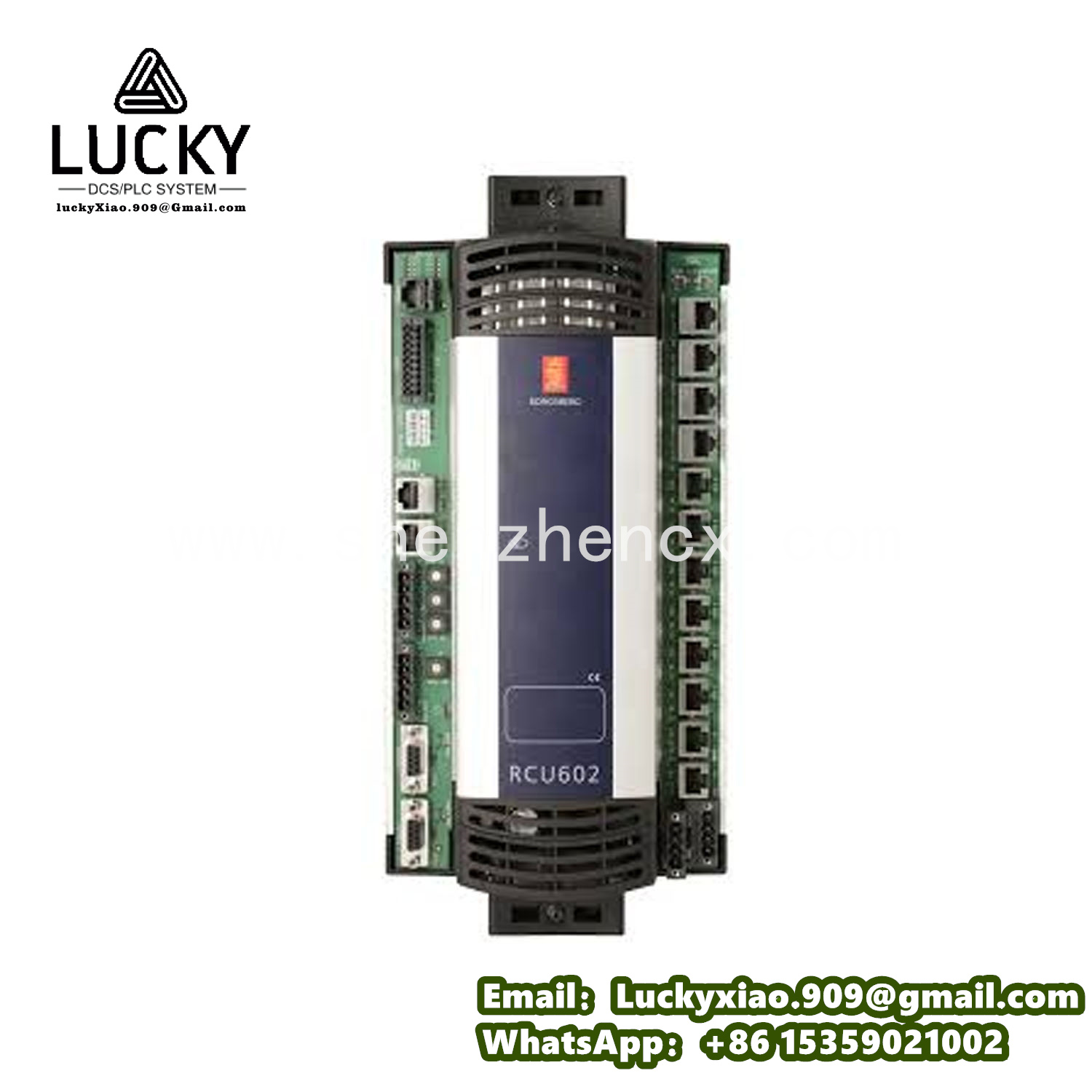
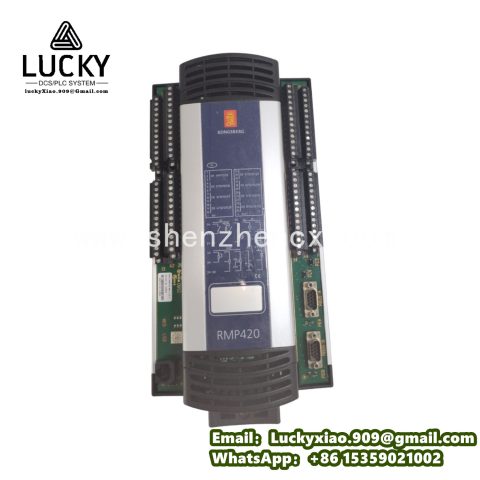
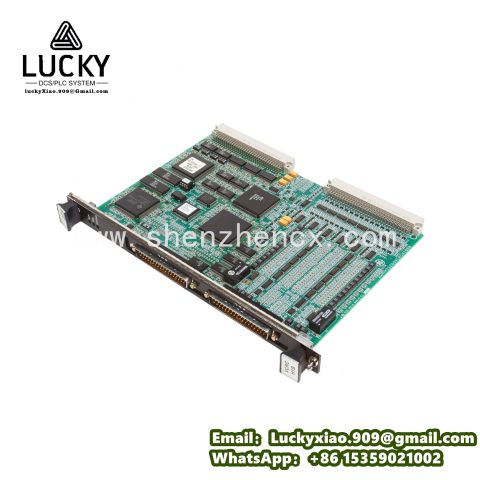
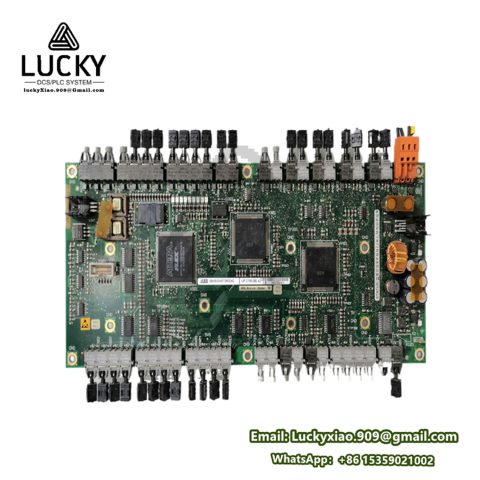
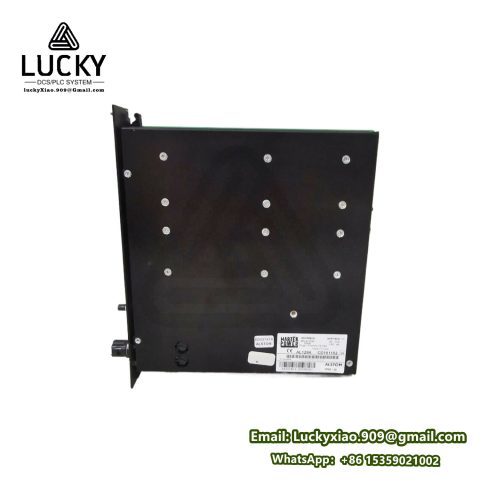
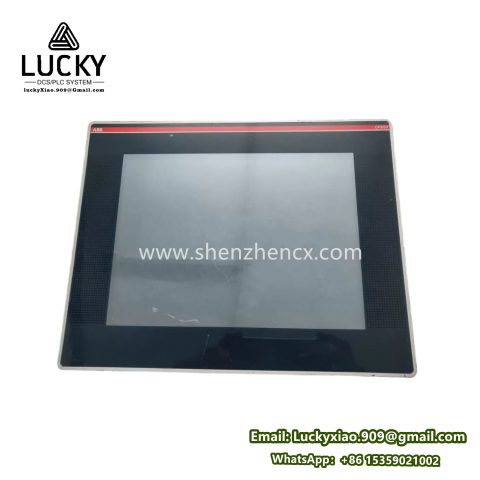
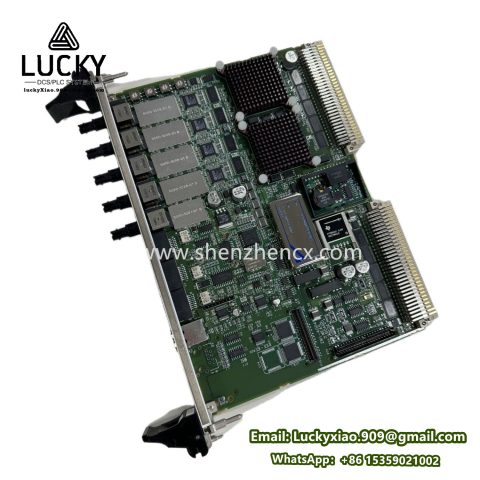
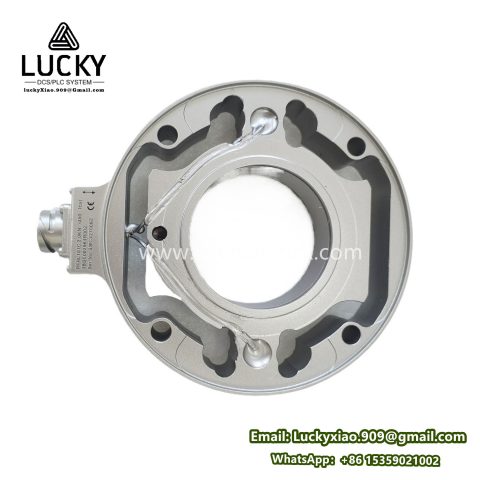
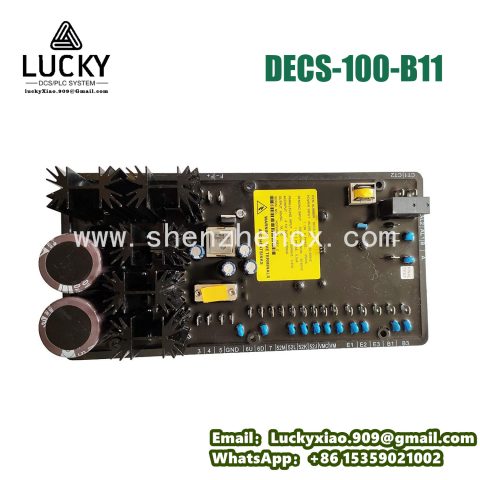
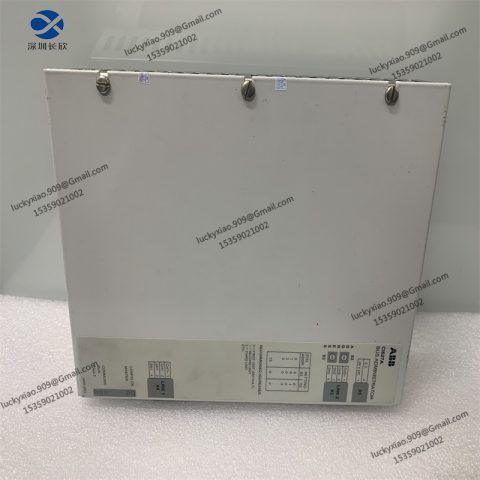
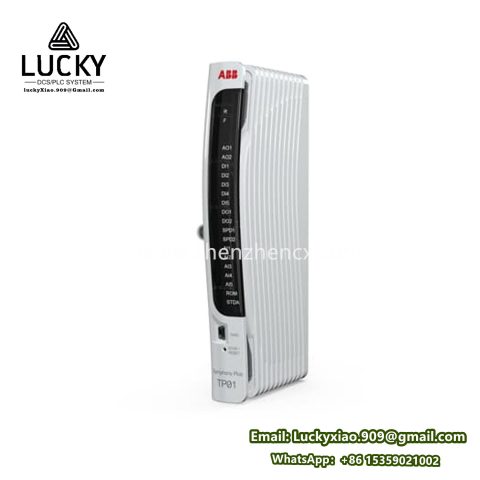
There are no reviews yet.